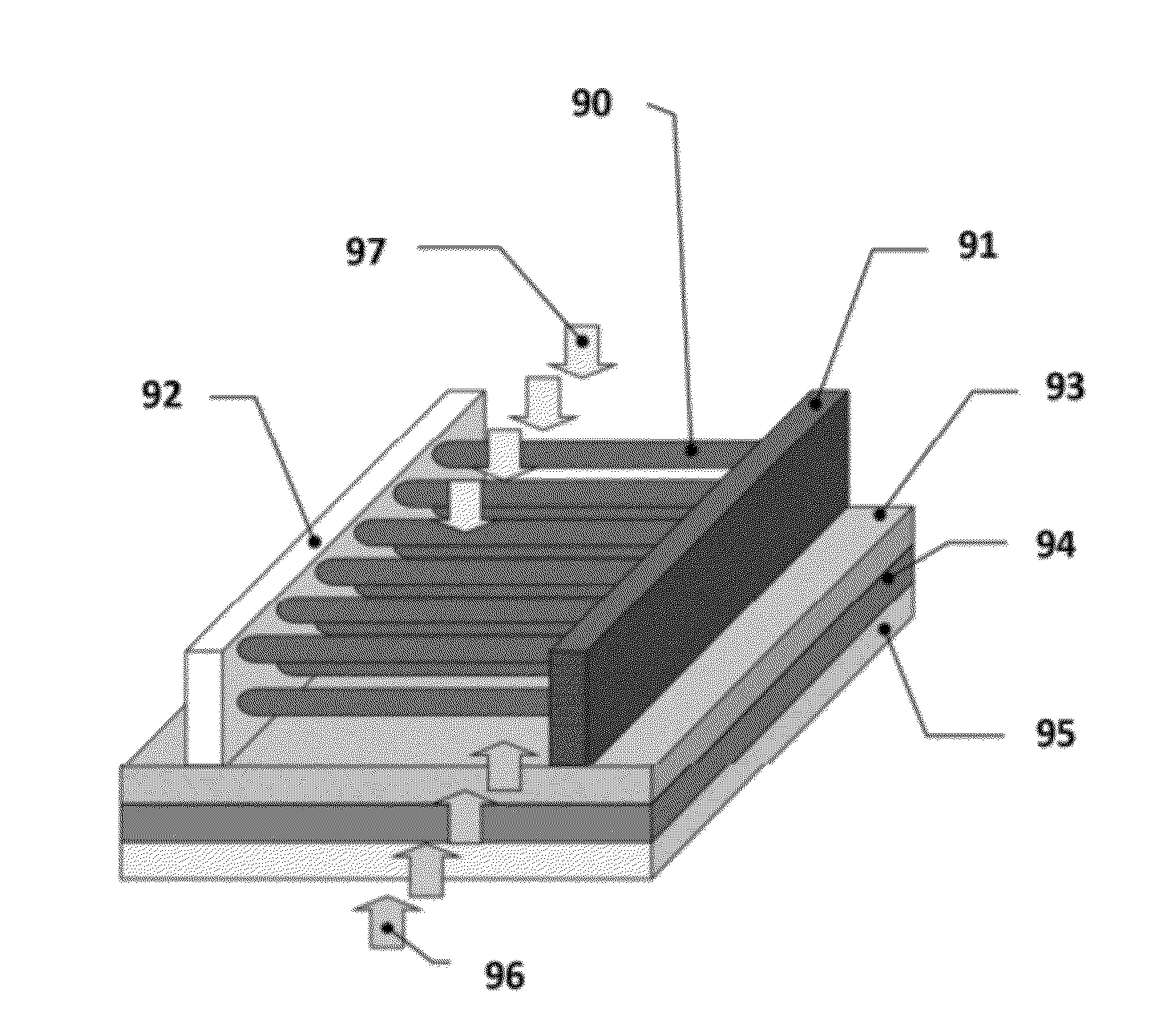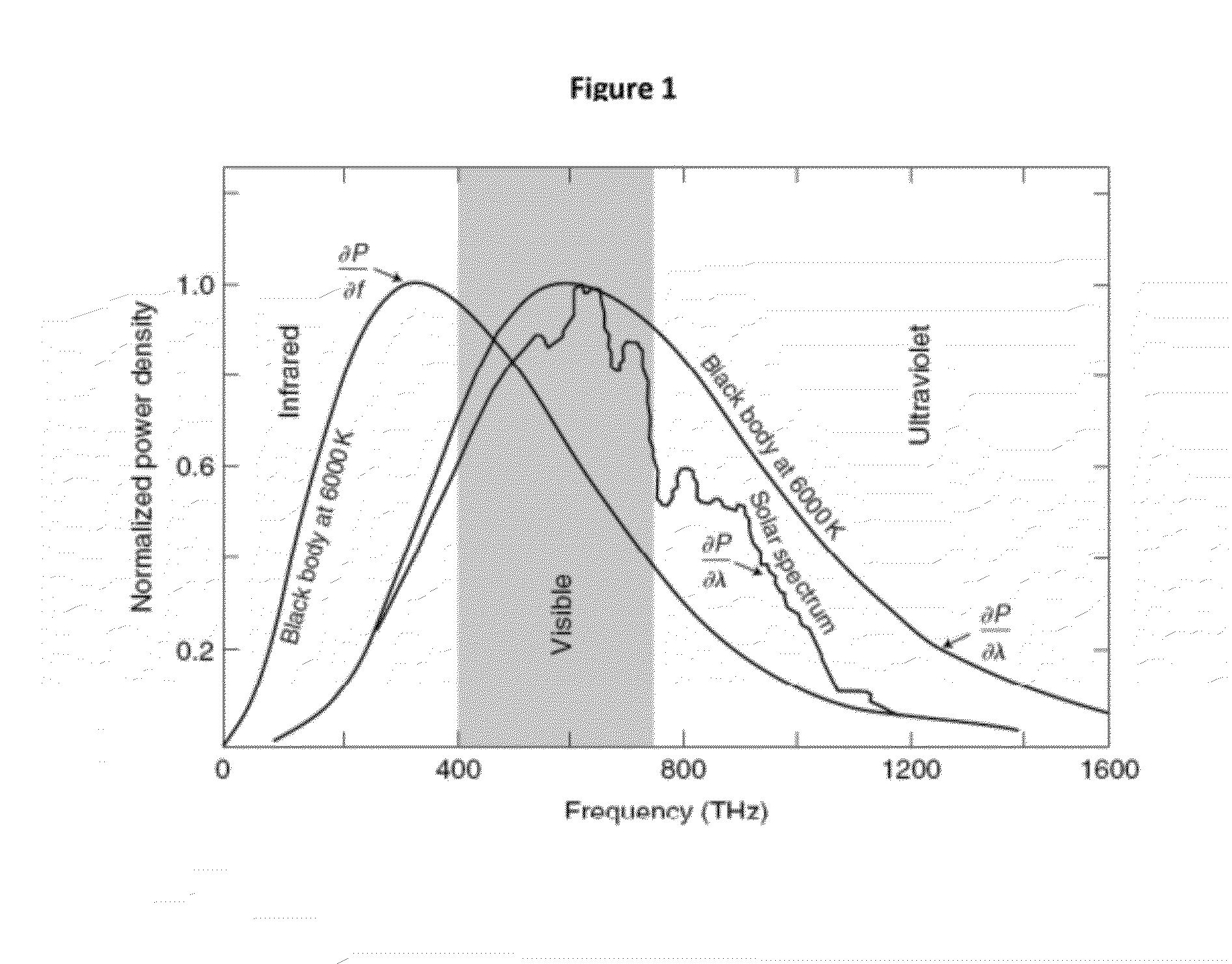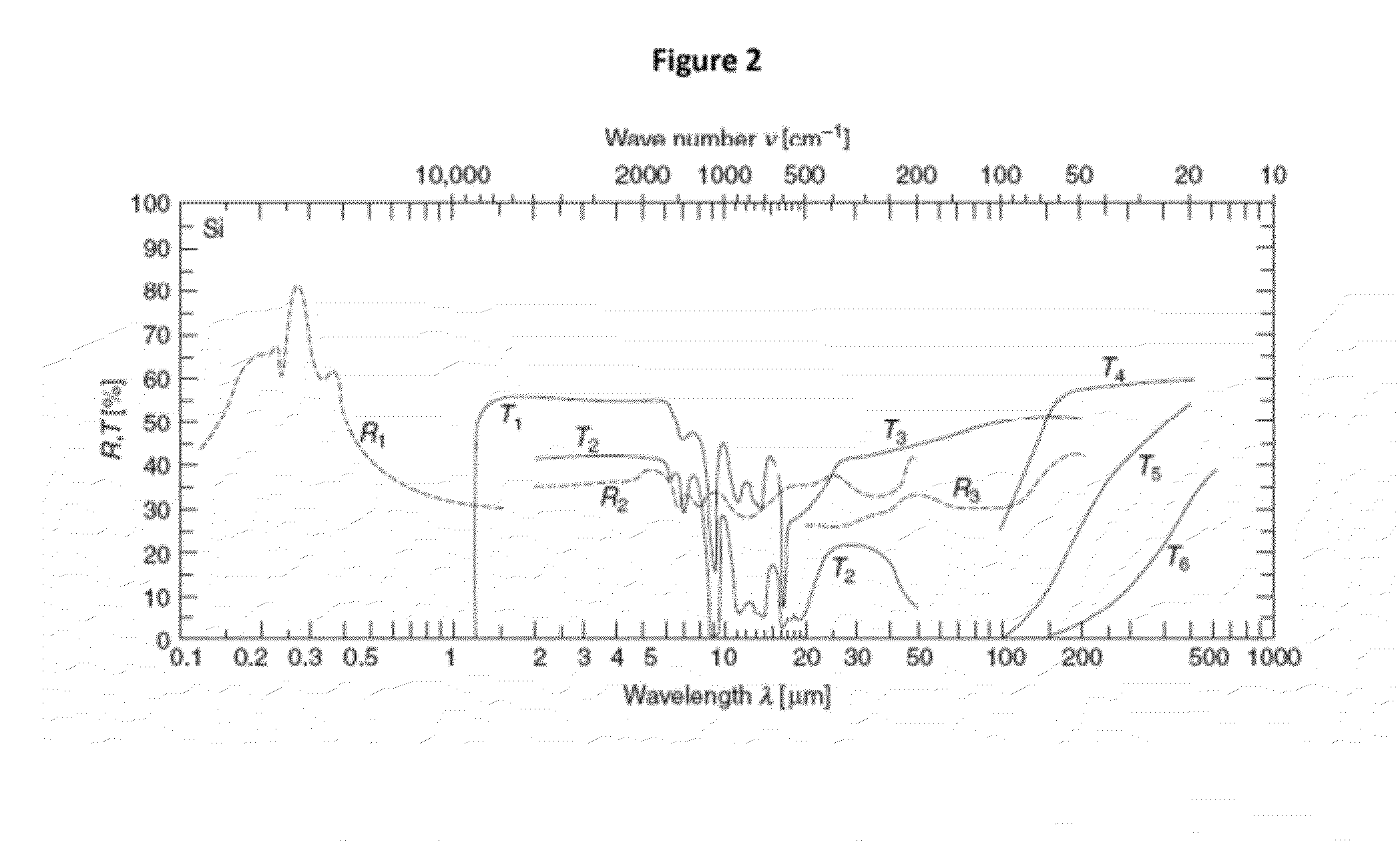High efficiency electromagnetic radiation collection method and device
a collection method and electromagnetic radiation technology, applied in the direction of electrical devices, semiconductor devices, material nanotechnology, etc., can solve the problems of enormous energy consumption of humans and the difficult to surpass the oil production rate of more than 100 million barrels per day in the international petroleum system, and achieve the effect of reducing or controlling thermal energy, high solar energy collection efficiency
- Summary
- Abstract
- Description
- Claims
- Application Information
AI Technical Summary
Benefits of technology
Problems solved by technology
Method used
Image
Examples
Embodiment Construction
[0026]The Earth's energy inputs consist of solar radiation (173,000 TerraWatts) and heat sources from inside the earth—mainly radioactivity (32 TerraWatts), tides (3 terraWatts) and volcanos and hot springs (0.3 terraWatts). The overwhelming majority of the Earth's energy input is due to solar radiation.
[0027]The sun radiates from radio waves to gamma rays; in this wide range the visible light spectrum exists. Visible light has a frequency range between 400 to 750×1012 cycles per second (THz) with a wavelength between 750 to 400×10−9 m (nm). At a distance of one astronomical unit (approx. 150 million kilometers) the power density of solar radiation is 1366 W / m2 which averaged over the earth is 342 W / m2. The spectral power density is the distribution of the solar radiation according to frequency, this being as follows:
[0028]Infrared and lower (frequency750 nm)—46.3%
[0029]Visible (400 THz<frequency<750 THz, 400 nm<wavelength<750 nm)—44.6%
[0030]Ultraviolet and above (frequency>750 THz,...
PUM
 Login to View More
Login to View More Abstract
Description
Claims
Application Information
 Login to View More
Login to View More - R&D
- Intellectual Property
- Life Sciences
- Materials
- Tech Scout
- Unparalleled Data Quality
- Higher Quality Content
- 60% Fewer Hallucinations
Browse by: Latest US Patents, China's latest patents, Technical Efficacy Thesaurus, Application Domain, Technology Topic, Popular Technical Reports.
© 2025 PatSnap. All rights reserved.Legal|Privacy policy|Modern Slavery Act Transparency Statement|Sitemap|About US| Contact US: help@patsnap.com



